Wearing a toy whale hat, whale tie and a whale motif shirt, Hideki Tokoro spends much of his days thinking about the world’s largest mammals. But he doesn’t want to protect them. He wants to hunt them.
To do that his company Kyodo Senpaku has built and launched a brand-new whaling $48 million “mothership” – the Kangei Maru.
“We are proud of catching whales and are very proud of this ship which will allow us to begin offshore mothership-style whaling this year,” Tokoro told reporters as he escorted them around the 370-foot, 9,300-ton vessel that set sail last Saturday for an eight-month tour of the country’s northern waters.
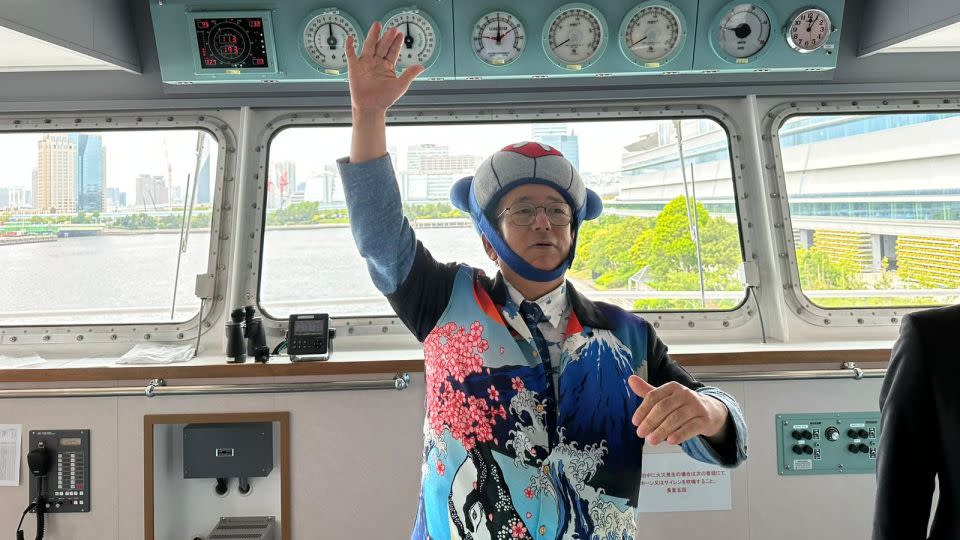
The new ship replaces the Nisshin Maru, the infamous whaling factory vessel dubbed by activists as a “floating slaughterhouse” that was decommissioned in 2020 after more than 30 years of service, during which it frequently clashed with anti-whaling activists.
The Kangei Maru is bigger and faster than its predecessor, the company says, and is equipped with state-of-the-art drones able to travel a reported 100 kilometers (62 miles) to allow crews of smaller boats to quickly locate and kill whales.
But activists say the ship’s high-powered features, including a cruising range of 13,000 kilometers (more than 8,000 miles) and its ability to sail for up to 60 days, suggests that Japan is setting its sights on whales far beyond its northern waters.
“Japan has never given up on its whaling ambitions,” veteran anti-whaling activist Paul Watson told CNN. “The only purpose of a vessel like that is so it can travel long distances to the Southern Ocean to hunt whales, (and) what the whalers are doing right now is really just a test run. They are testing out the new ship in their waters.”
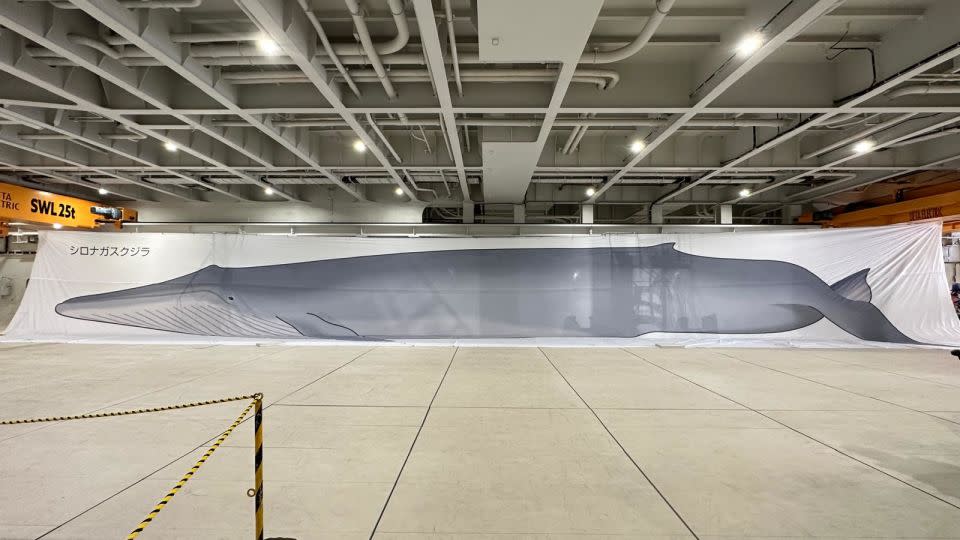

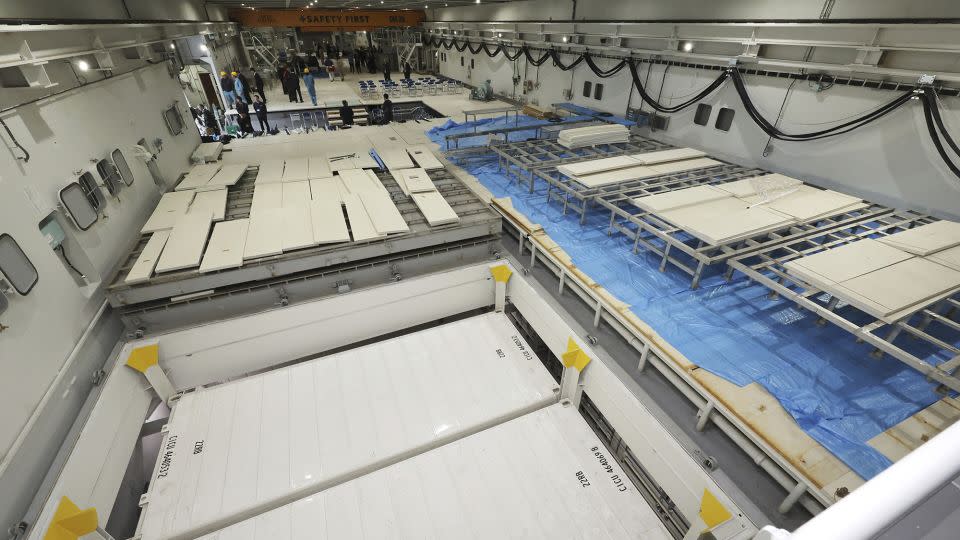

‘We need to cull whales’
The Kangei Maru boasts a slipway large enough to haul 85-foot whales from the sea that leads to an indoor flensing deck the size of two basketball courts.
There, workers will strip away the blubber before cutting up the whale flesh on enormous cutting boards, before vacuum-packing and storing the meat in 40 industrial freezers, ready for sale.
“Whales are at the top of the food chain. They compete with humans by eating marine creatures that should be feeding other fish,” Tokoro said on the tour.
“We need to cull whales to keep the balance of the ecosystem – it’s our job and mission to protect oceans for the future.” He also told CNN that most of the ship’s catch would be killed “almost instantly” by cannons at sea. “We aim for perfection, but some of them may suffer. In such cases, we will use a rifle to finish the job.”
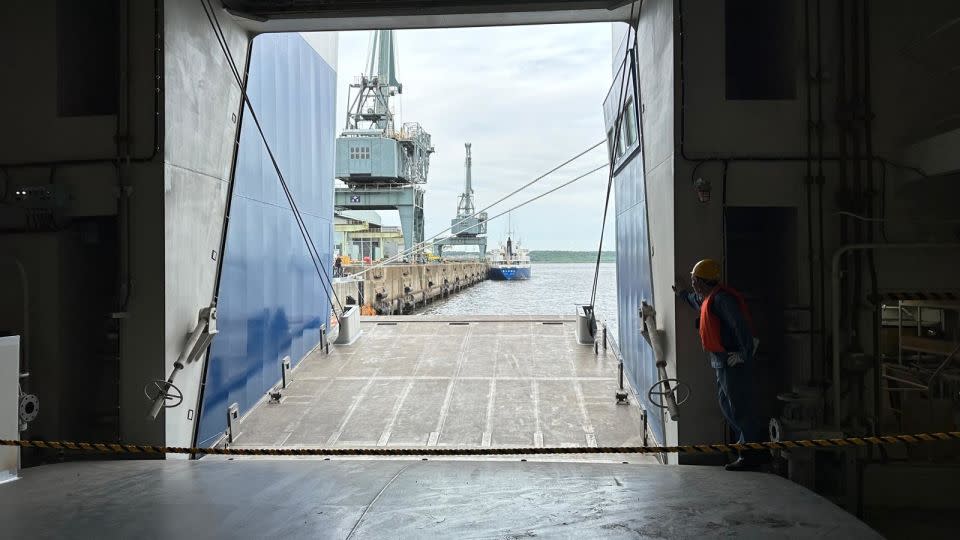

Besides objecting to the slaughter one of the ocean’s most majestic creatures, marine conservation groups and scientists have highlighted the important role which whales play in helping to tackle the climate crisis through sequestering and storing planet-heating carbon emissions.
“Whales are not just consumers in ocean eco-systems – they recycle a ton of nutrients into the environment which helps stimulate plant-life growth,” said marine ecologist Ari Friedlaender, also rejecting pro-whaling arguments that commercial hunts could be “sustainable.”
“Humans have a very long history of killing whales and have not done a good job of being able to sustainably harvest animals,” he said. “There is no way to sustainably harvest a wild animal like that.”
Why is Japan so determined to keep whaling?
Commercial whaling was banned in 1986 under a moratorium by the International Whaling Commission (IWC) after whale populations were almost driven to extinction by humans.
Japan is one of three countries – along with Norway and Iceland – that continues to hunt whales, and officials argue that the industry is an important part of its culture and history – and also provides food security.
Iceland, which has fiercely defended commercial whaling, said it would end whaling in 2024, citing falling demand for whale meat as well as “high operation costs and little proof of any economic advantage.”
Commercial whaling continues in Norway, which experts say has quietly become the world’s leading whaling nation – killing more whales than Japan and Iceland combined.


For decades, Japan has justified whaling under the guise of “scientific research.”
In 2018, it tried one last time to persuade the IWC to allow it to resume commercial whaling – and failed. So, it withdrew from the body and resumed commercial whaling months later, in defiance of international criticism.
“Japan is no longer party to the International Convention for the Regulation of Whaling and can argue that it is no longer bound by provisions and constraints,” Donald Rothwell, an international law professor at the Australian National University (ANU), told CNN.
“Within its waters, it has the absolute authority to control the management of living resources – and that includes whales.”
Under Japanese law, three species of whale are permitted to be hunted in its territorial waters and exclusive economic zones – endangered sei whales and threatened minke whales and Bryde’s whales, with endangered fin whales set to be added to kill lists.
“Whales are important food resources and should be sustainably utilized based on scientific evidence,” said government spokesperson Yoshimasa Hayashi this month, as he announced a proposal to hunt fin whales, the second-largest species of whales after blue whales.


The World Cetacean Alliance (WCA) marine conservation group said that whale watching in Japan was “a far more successful industry” than harvesting whale meat.
“Commercial whaling in the 21st century is unjustifiable,” it said. “The whaling industry in Japan recognizes that it is a challenge to increase whale meat consumption and there is currently no market,” WCA said.
“So why keep slaughtering these wonderful and intelligent animals?”
Tokoro ruled out whale watching. “We will not switch to whale watching but eating whale meat while watching whales might be quite a nice touch,” he told CNN.
Demand for whale meat in Japan
Over the years, Kyodo Senpaku has launched aggressive public relation campaigns to promote whale meat and win over new generations of young diners.
Tokoro says he eats whale meat every day.
“Whale meat is not only delicious, it’s good for you,” Tokoro told reporters during the tour of his ship, as he talked up the purported “health benefits” of eating whale, claiming that the meat could cure hair loss and cancer.
“I can definitely say whale meat and rice is a really good (combination) for Japanese people. There is no doubt about that, much better than beef and bun.”
Last year Tokoro, again wearing his whale hat, launched controversial whale meat vending machines, offering whale sashimi, whale steak and whale bacon.
The company has also sponsored influencers from countries such as Russia, Thailand and South Korea – hosting them at a local izakaya in Osaka, where they sampled dishes like whale sashimi and skewers and encouraging them to take the message back to their followers that whale meat was delicious and acceptable.
Japan may have a long and storied history of whaling dating back to the Edo period in the 1600s, but experts say whale meat consumption only really peaked after World War II – when food sources, especially protein, were scarce.
Today, whale meat is now considered more of a “luxury” dish, said Nobuhiro Kishigami, a professor at the National Museum of Ethnology, one of the country’s largest research institutes.
“The fact is that there is little interest in whaling and whale meat among Japanese people as a whole,” Kishigami told CNN. “Most young people, especially the majority that live in cities, do not know or care much about whaling and its history and remain indifferent.”
The same goes for dolphin meat, he added. “It’s just a sign of the times. But if we were asked to stop eating blue fin tuna, there would be a huge uproar. We would react very badly to that.”
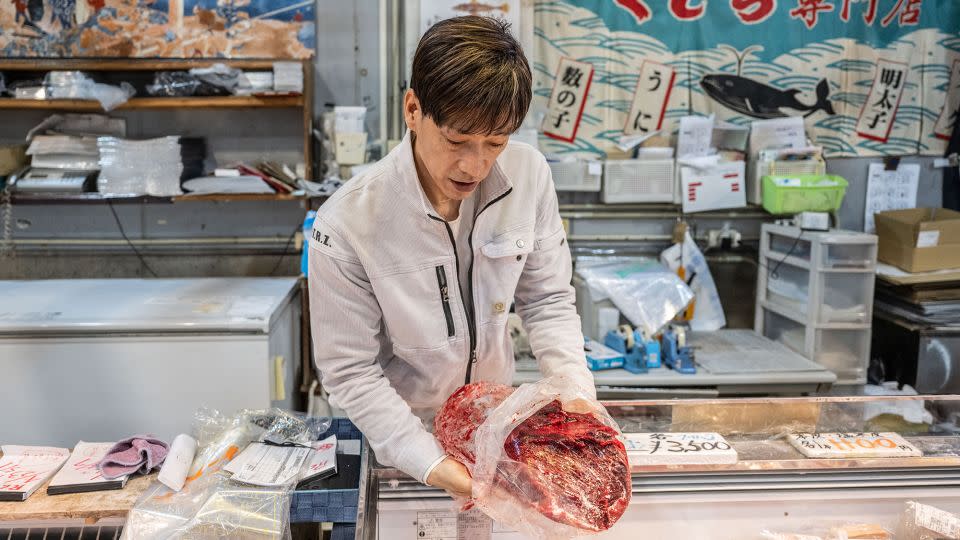

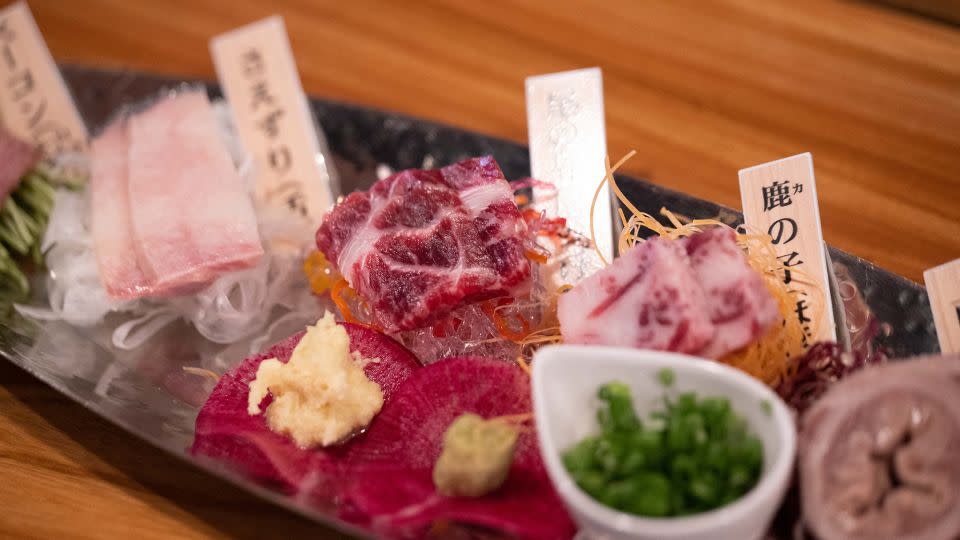

Japan’s fisheries ministry estimates that between 1,000 and 2,000 tons of whale meat are consumed annually in the country, compared to average annual totals of more than 230,000 tons during the 1960s.
“There is still certainly a market (for whale meat in Japan) but market size and production volume have shrunk dramatically,” economics professor Mitsuhiro Kishimoto from the Shimonoseki City University told CNN, noting that several major whaling companies had since withdrawn from the trade.
“The demand for whale blubber disappeared after the discovery of oil and petroleum products, so many countries stopped whaling and with international regulations, the number of caught whales decreased and as a result, whale meat production decreased while beef, pork and chicken became more popular,” he said.
Scientists have also expressed concern about the risks of consuming whale meat, with studies pointing to high levels of mercury found in whale and dolphin meat, which could prove dangerous to consumers – especially pregnant women and young children.
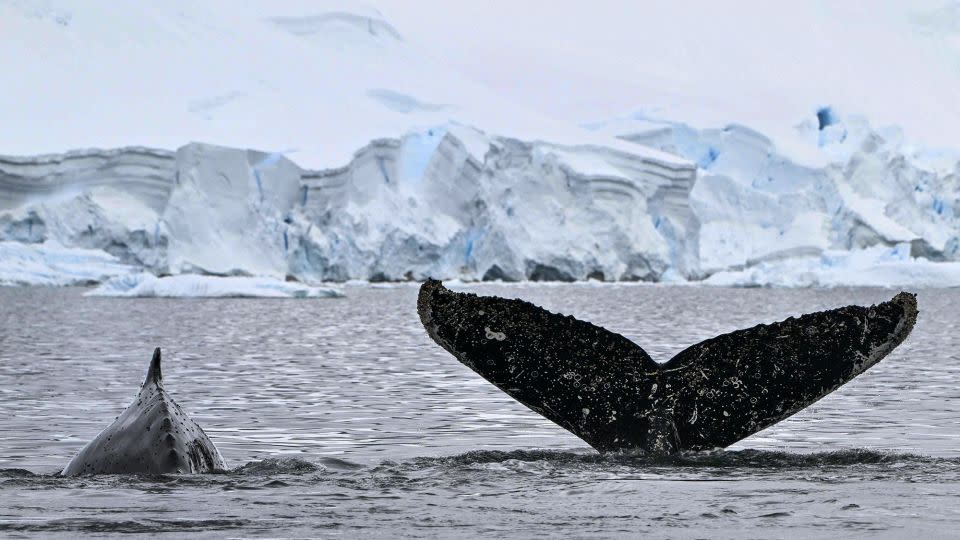

Could Japanese whalers return to the Southern Ocean?
Located in deep waters surrounding the entire continent of Antarctica, the Southern Ocean Whale Sanctuary hosts dozens of whale species including humpbacks, blue whales and fin whales.
It was established by the IWC in 1994 to protect whale species after centuries of hunting, but until 2019 Japan took regular trips to the region to hunt for self-stated “scientific research” purposes.
Japanese whalers killed 333 minke whales in the Southern Ocean in 2018/2019, according to the IWC, before abandoning the region after it left the international body.
Takaaki Sakamoto, director of the Whaling Affairs Office in Japan’s Fisheries Agency, told CNN that Japan sent ships to the Antarctic last year to collect numbers and skin surface samples, but those expeditions did not involve killing whales. He said they planned to return this year to do the same.
Tokoro told CNN that the Kangei Maru is not planning on killing whales beyond Japanese waters because it doesn’t make economic sense.
“Commercial whaling is not profitable,” he said. “It will take 50 days to get to the Antarctic and back and we are not confident we can make a profit by paying the wages of employees and fuel for 50 days. However, I will go only when the government orders me to go … Until then, I will not go commercial whaling at all.”
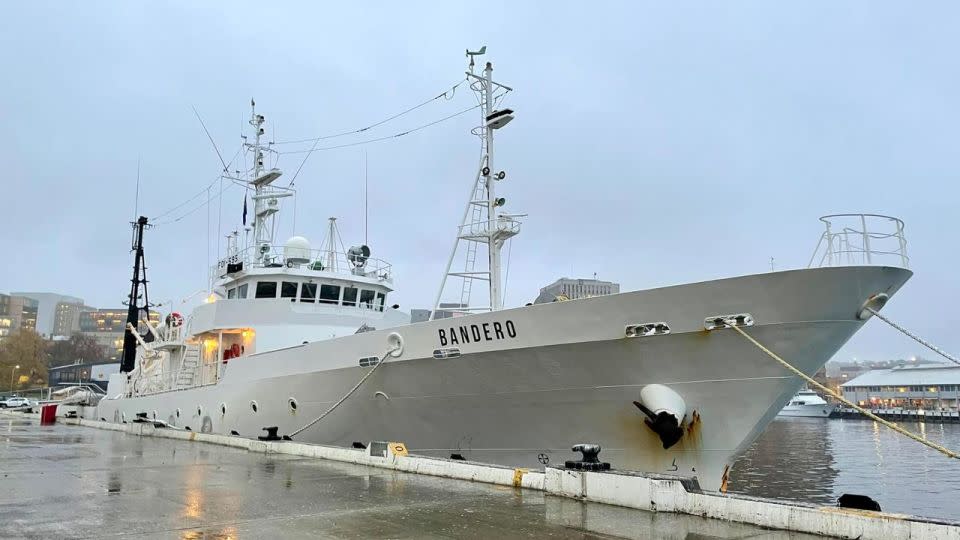

But activists aren’t convinced.
“Given the ship’s long-range capabilities and drones, and recent announcements from Japan’s fisheries ministry that it is keen to start hunting fin whales, we believe there is a high likelihood that Japanese whalers will return to the Southern Ocean,” said James Anderson, activist and founder of the Whale Defense Agency (WDA).
“The Southern Ocean is a critical habitat for many whale species that provides a safe haven for breeding and feeding … protecting it is more important than ever due to the increasing threats posed by climate change and illegal whaling.”
Rothwell, from ANU, said that if Japan looks to kill whales beyond its territorial waters, it can expect an international response.
“It would immediately trigger global interest and action about the conservation and protection of whales, especially in waters sanctioned by the IWC as a whale sanctuary,” Rothwell said.
Watson, the veteran anti-whaling activist, told CNN he’s prepared to mount a physical response – with a former Japanese fisheries patrol vessel he’s acquired in anticipation of Japanese whalers returning to the Antarctic by the end of the year.
“It’s called the Southern Ocean Whale Sanctuary for a reason – you don’t kill whales there,” Watson said.
“We want to be able to track them down and intercept them like we’ve done before – and we are more than prepared to do it again.”
For more CNN news and newsletters create an account at CNN.com
Source Agencies



